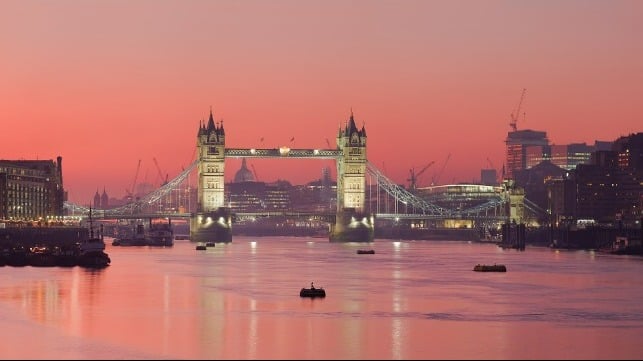The River Thames Gets Major Exhibition at Museum of London Docklands

The River Thames has been an integral part of the UK's development into a global power, and its history is set for display in a six month exhibition set to open this October.
The Port of London Authority (PLA) has partnered with the Museum of London Docklands for an exhibition that will display over 200 years of London's seaport evolution, with the Thames playing a central role in trade, military conquests and economic transformation.
The aim of the exhibition will be to showcase how the port has changed and shaped London, its people, design, culture, prosperity and global position.
Part of the activities will be a live shipping tracker showing the extent of Thames traffic today. The thriving port handles over 50 million tons of cargo and receives over 12,000 commercial vessels annually, connecting with over 50 countries worldwide.
“The importance of trade on the Thames has been pivotal to London’s development and will be crucial to its future success. As life gradually returns to something like normal, post the COVID-19 pandemic, this exhibition is an opportunity for the public to explore how the commercial river shapes all our lives,” said Robin Mortimer, PLA's CEO.
He added that it covers all aspects of the port’s past, present and future, from the contribution of immigrants over many decades to the latest technology in use to keep navigation safe.
The exhibition coincides with the Thames Vision strategy, which is intended to make sure it remains relevant in a fast-changing world. Launched in 2016, The Thames Vision 2035 river strategy captures six goals for increasing the use of the river in a safe and sustainable way across port trade, inland freight, passenger transport, sport, environment, culture and community.
“It’s a great way to focus on how we learn from the past and make the most of future opportunities to make full use of the river’s potential,” said Mortimer.
The exhibition will draw upon the extensive archives of PLA to present a picture of the operations that have enabled the port to connect London to the rest of the world, from the final days of the 18th century to the creation of the huge London Gateway ‘mega port’ at Thurrock in the Thames Estuary. It will address the wider global context of London’s seaborne trade, most notably its historical dependence on the sugar trade and slavery.
The Museum of London Docklands was originally part of West India Docks, London’s first enclosed dock system and a hive of activity for valuable cargoes from around the world. It operated from 1802 until its closure in 1980.
One notable exhibit will be a document commemorating the original unveiling of the statue of merchant and slave owner Robert Milligan, which was removed from outside the museum in 2020 but will be displayed alongside original plans for docks. The statue serves as a reminder of the full truth behind the economic prosperity that made the building of West India Docks possible.
